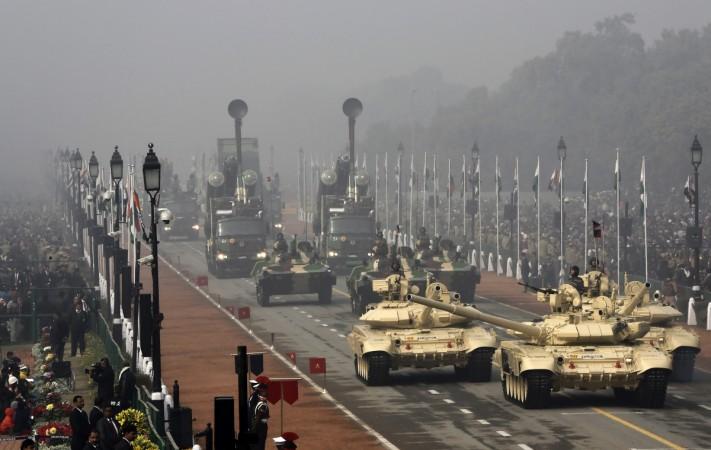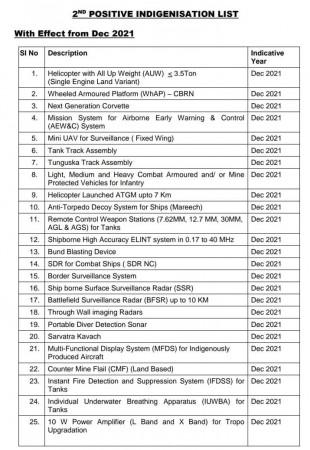Continuing its push for Atmanirbhar Bharat in defence, the Ministry of Defence announced the second defence negative import list, which included 108 items such as single-engine light helicopters, next-generation Corvettes, Airborne Early Warning and Control (AEW&C) systems, surveillance mini-UAVs, and anti-material rifles. This is the government's second report, following a list of 101 negative import listings released in August of last year. However, the nomenclature of the list has been changed to 'Positive Indigenisation List'.
A negative import list helps domestic businesses since it lists all of the military equipment that the government will not import in the future. The cut-off date for 49 of the 108 items in the second list is December 2021. Light, medium, and heavy combat armoured vehicles for infantry, helicopter-launched anti-tank guided missiles (ATGM) with a range of up to 7 km, mission systems for AEW&C, and single-engine land version helicopters weighing less than 3.5 T are among the important items on the list.

However, one of the concerns with the items on the list is that the majority of them are already built in the country, and several systems haven't been imported in years, such as single-engine light helicopters and corvettes, among others.


The second list, according to the defence ministry, focuses on weapons or systems that are currently in development or trials and are expected to result in formal orders in the future. The defence ministry created this second list after multiple rounds of meetings with government and commercial manufacturing sector confederations to examine if future capabilities of the Indian industry will be able to meet the needs of the armed forces, according to the statement.

"Not only does the list recognise the potential of the local defence industry, but it will also invigorate impetus to domestic Research & Development by attracting fresh investment into technology and manufacturing capabilities," it added.
India's long journey towards self-reliance in Defence

For years, India has been one of the world's top three defence importers; now, the government aims to lessen reliance on imported defence items and give the indigenous defence manufacturing industry a boost. By preventing the importation of the commodities on the negative list, the domestic industry is given the opportunity to step up and produce them for the forces' needs. According to the Stockholm International Peace Research Institute, which records worldwide defence exports and imports, India was the world's second-largest buyer between 2014 and 2019, with US$ 16.75 billion in purchases.

















